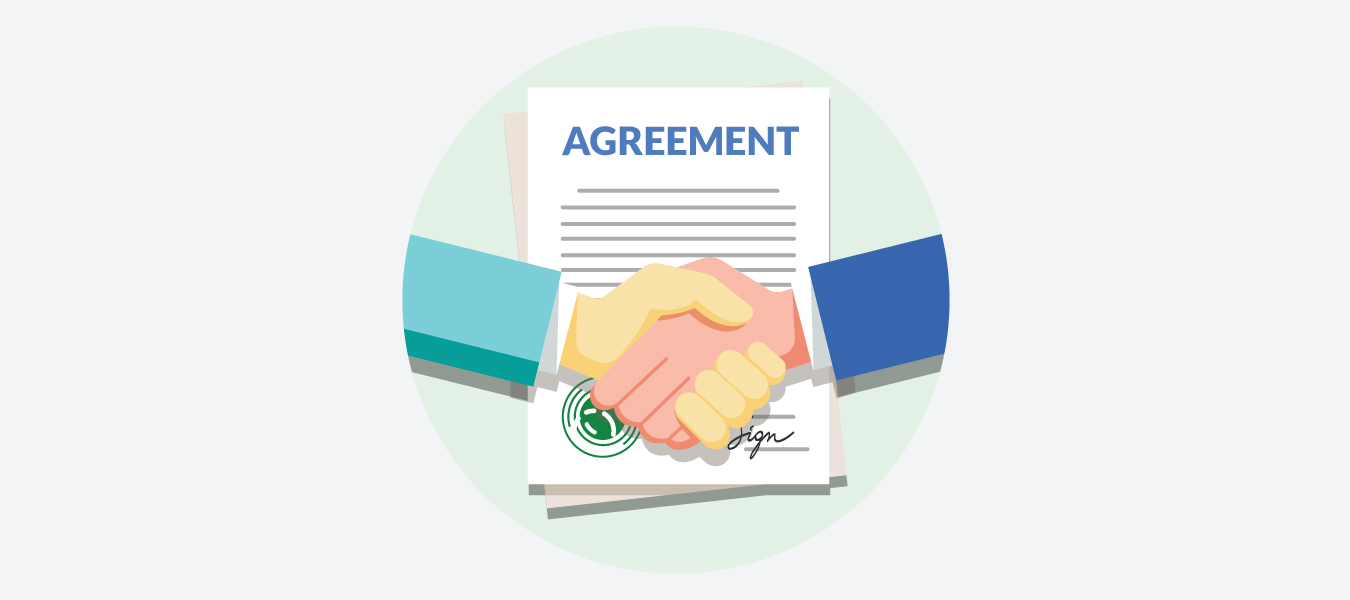Everything You Need to Know About Non-Disclosure Agreement
A non-disclosure agreement is necessary to protect confidential data. Employees require this information to execute daily tasks. As this data is disclosed to employees, it is necessary to bind them by a contract to secure your data. Many organizations include NDA as a mandatory document or procedure for every employee. It not only includes trade data of the organization but also client information, mailing lists, and other sensitive information.
What is NDA?
A non-disclosure agreement is a type of confidentiality document or agreement which is signed whenever confidential documents, information, or sensitive data is involved in the transaction of two parties.
For instance, an employee-employer relationship. If the employer is disclosing confidential information which is crucial for the organization, employees may have to sign an NDA.
Usually, many organizations bifurcate the need for an NDA according to the job role of the employee. If the employee has access to confidential data which is critical for the health of the organization such as financial data, then NDA is included as a part of the onboarding activities.
However, many organizations also include NDA as a mandatory document or procedure for every employee. It not only includes trade data of the organization but also client information, mail list, and other data is secured.
NDAs are also known as:
- Confidential Disclosure Agreement (CDA)
- Proprietory Information Agreement (PIA)
- Confidential Agreement (CA)
- Secrecy Agreement
Types of NDAs
NDAs are of three types:
Unilateral NDA: Two parties involved. Only one party reveals information to the other, and the information being disclosed is expected not to be further exposed.
Bilateral NDA: Both parties share information with each other with full understanding that anything shared will not be shared with other parties.
Multilateral NDA: Three or more parties involved with only one sharing information and the rest agreeing not to share it with external parties.
When You Need It?
Generally, you need an NDA at the time of hiring of the employee or during the commencement of the employment or contractor term.
The agreement should include:
- Contract terms
- Contract agreement
- Contract consideration
The terms make up the contract. For instance, what information employee can or cannot share, or how the employee should be utilizing a specific type of company data.
The agreement is agreeing to these terms by undersigning the contract, which is achieved by both the parties.
Consideration is the value that is put at stake or exchanged for the contract. Speaking of the employee contract, it is the salary of the employee which is at stake.
If your organization has an NDA for only some job roles, then NDA should be signed during the promotion of the employee as well.
Things You Need to Know While Drafting/Signing an NDA
Here are some precautions you need to take while creating or signing a non-disclosure agreement.
- Keep the language simple and unambiguous, and the information accurate
- To prevent any misunderstanding, all parties involved must read the NDA carefully and verbally explain it
- The NDA must also have an expiration and renewal date
- The NDA must be to the point and should not contain unwanted clauses or conflicting sentences
Why You Need It?
Loss of Confidential Data
When an employee departs from the organization, they are leaving with a ton of information. They know a lot of internal aspects of your organization which can be utilized by your competitors or the employee too.
Imagine an employee leaving the organization and starting his or her own company?
They can use the confidential information and trade secrets of your organization which can immediately reduce your market value.
To avoid that from happening, you need an NDA. And also to avoid employees from misusing or leaking your data even after leaving the organization.
Psychological Impact
Let’s be honest, most of the times you are not even planning to file a lawsuit on the employee if he or she ends up leaking confidential information. But, NDA helps in creating a psychological impact.
When employees know that they can face a lawsuit, they are more cautious about the information of your organization.
Retaining Intellectual Property Rights
There are several guidelines and laws regarding intellectual property rights.
Usually, inventions and innovations become the property of the creator. However, many a time, the ownership rests with the employer just because they have hired someone for the work.
Contrary to this, some laws also state that the inventions of the employee without the use of company resources and not during office hours are the property of the employee.
To clarify how employee inventions will or will not become the intellectual property of the organization, NDA is the right route.
Clear Guidelines
Through an NDA, you can clearly specify the information which the employee needs to secure. For example, a digital marketing agency may want to protect client data, lead information, digital secrets, inventions, digital credentials, etc.
What Should Be Included?
- Involved Parties: The contract should mention the parties that are entering the contract or agreement.
- Data: It should justify, state or define the type of information and data that the employee is expected to protect.
- Time: It should include contract validity.
- Non-Solicitation: It is a clause which protects your employees from being solicited by another company.
- Non-Compete: It is a clause which mentions the time period during which not employees aren’t allowed to directly compete with the organization.
- Notice: These are the guidelines to be followed during a breach.
A non-disclosure agreement is necessary to protect confidential data. Employees require this information to execute daily processes. As this data is disclosed to employees, it is necessary to bind them by a contract to secure your data.
Subscribe For Newsletter
Subscribe to get the latest news and happenings around recruitment space


